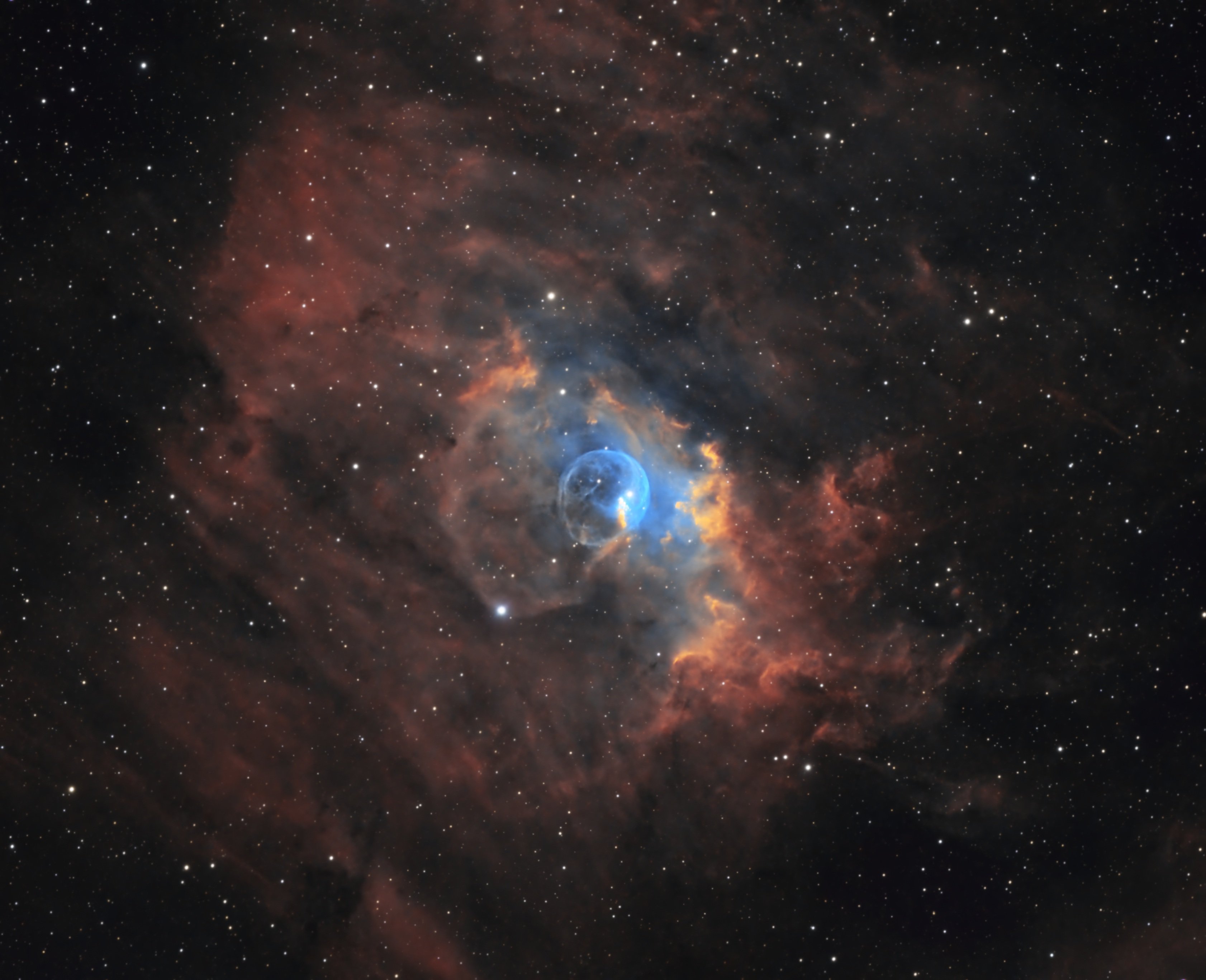Bubble Nebula (NGC 7635) - SHO
Stellar wind bubble in Cassiopeia with 29 hours of integration

Click to explore in full resolution
Technical Specifications
Resolution: 6000x4000 (cropped and drizzled 3x)
Integration: Ha: 113×300s, OIII: 160×300s, SII: 77×300s
Captured: Captured over approximately one week
Equipment: Redcat71 refractor (350mm) with ZWO ASI2600MM Pro camera on Advanced VX mount
Location: Backyard location with exceptional seeing conditions
Processing Workflow
Scientific Context
NGC 7635, also known as the Bubble Nebula, Sharpless 162, or Caldwell 11, is an HII region emission nebula in the constellation Cassiopeia. It lies close to the direction of the open cluster Messier 52. The "bubble" is created by the stellar wind from a massive hot, 8.7 magnitude young central star, SAO 20575.
The nebula is near a giant molecular cloud which contains the expansion of the bubble nebula while itself being excited by the hot central star, causing it to glow. It was discovered in 1787 by William Herschel.
This project was an experiment to push the limits of the Redcat 71 + ASI2600MM combination on a very small target. The Bubble Nebula is typically imaged with focal lengths of 1000mm or more, but this image demonstrates what's possible with careful processing techniques including dithering, drizzling, and extensive integration time.
The final image is cropped and drizzled 3X to enhance resolution, with a total of 29 hours of sub-exposures captured over about a week. The excellent guiding conditions (RMS consistently between 0.15-0.35 arcseconds) were crucial for the success of this challenging target with the relatively short 350mm focal length.